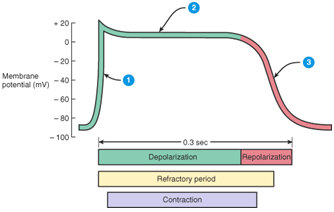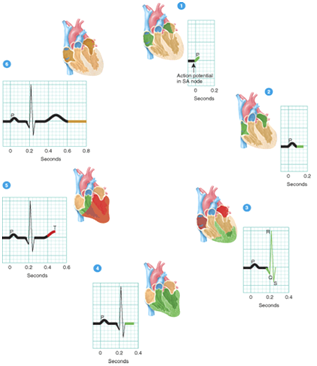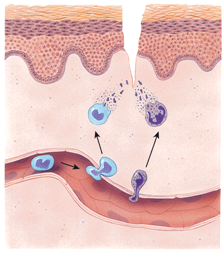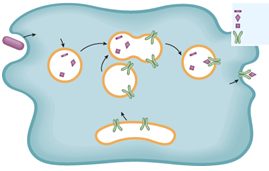Reference no: EM131126174
1. Describe the negative feedback loop that controls the rate of erythropoiesis. Under what circumstances would you expect the rate of erythropoiesis to be increased? How would it be possible to tell if the rate of erythropoiesis is elevated?
2. Explain the proposed role of hemoglobin in the maintenance of blood pressure.
3. On a differential white blood cell count, Ezra is found to have 85 percent neutrophils and an elevated number of band cells. What is the most likely cause of Ezra's high neutrophil count? What benefits are being provided by all these neutrophils? What is the significance of the band cells?
4. List and briefly describe the three mechanisms used to reduce blood loss from a damaged blood vessel.(3 marks)
5. Explain how the heart pumps blood into two separate closed circuits that are arranged in series.(4 marks)
6. Describe what is happening at #2.

7. Describe what is happening at #5 in the diagram below.

8. Describe the five main types of blood vessels as you explain the flow of blood between the heart and the tissues.
9. Identify and discuss the factors that contribute to systemic vascular resistance. (3 marks)
10. Describe how lymphatic capillaries are one-way only vessels.
11. Describe what is happening in the diagram.

12. Describe what is happening in the diagram.

13. Describe the inward forces of elastic recoil, and explain why the lungs do not normally collapse during expiration.
14. Describe and explain the effects of smoking on the functioning of the respiratory system.
15. Describe the neural, chemical, and physical changes that increase the rate and depth of ventilation during exercise.
16. Describe the structures and functions of the enteric nervous system.
17. Explain why food does not normally go up into your nasal cavity or down into your lungs when you swallow, even if you are standing on your head when you swallow.
18. Identify the protein-hydrolyzing enzymes in the digestive tract, and name their sources. Why are these enzymes released in an inactive form?
19. Describe the structural characteristics of the small intestine that enhance its function as the major absorber of nutrients.
20. Describe the possible fates of glucose in the body.
21. What are the possible fates of pyruvic acid in the body? What is the primary determinant of the fate of pyruvic acid? What is the fate of compounds to which pyruvic acid may be converted?
22. Identify the different types of lipoproteins and describe the function of each.
23. Trace the flow of a water molecule through the nephrons from the afferent arteriole to the minor calyx.
24. Describe in detail how the renin-angiotensin negative feedback loop helps regulate blood pressure and glomerular filtration rate in response to dehydration.
25. Describe the negative feedback loop that stimulates thirst as a result of dehydration.
26. Explain how it is possible for a patient with chronic obstructive pulmonary disease to have a normal extracellular pH while having an elevated partial pressure of carbon dioxide.
27. Describe the fluid and electrolyte disorders to which the elderly are particularly susceptible.
28. Trace the path of a sperm cell from the site of its maturation to the site where it leaves the male body. Include descriptions of fluids added along that path.
29. Describe the roles of estrogens and progesterone.
30. Describe the role of the autonomic nervous system in the human sexual response.
31. Describe the products of the three primary germ layers.
32. Describe the hormonal events surrounding parturition.